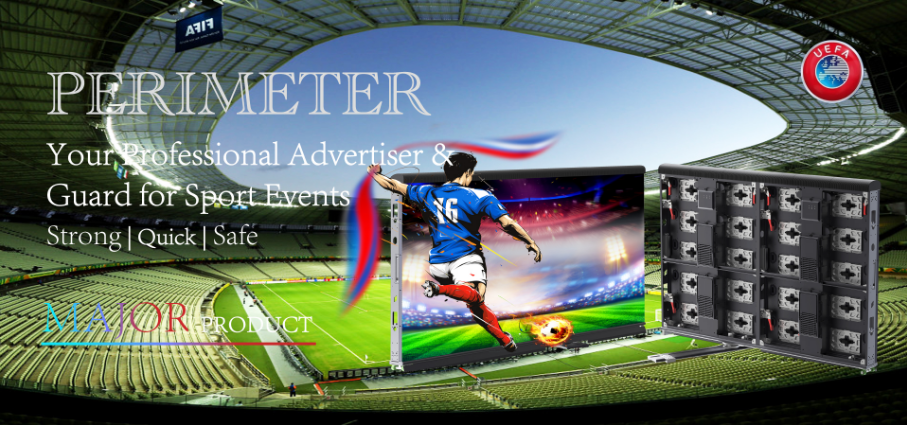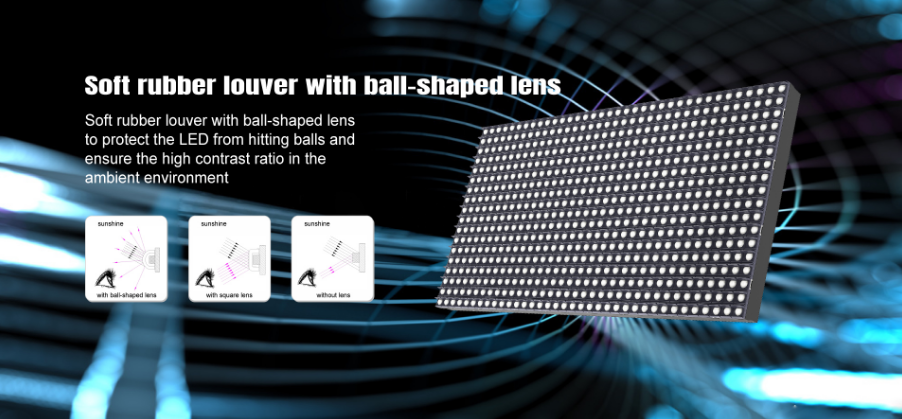Sport Stadium LED Display: The Complete FAQ Guide 2024
Sports LED displays play an increasingly important role in many sports events by displaying commercial advertisements, recording each crucial second, and aiding in fair judgment. Beyond these basic functions, they are key in engaging the audience, enhancing the atmosphere, and highlighting the excitement of sports events.
Today, we would like to share with you how to choose the right sports LED display for different applications, hoping this will be helpful to you.
What is a Sports LED Screen?
A sports LED display is used for advertising around football stadiums, basketball courts, badminton courts, and other sports venues. These screens play advertising information repeatedly while audiences enjoy the game, seamlessly blending modern sports with commercial operations. Additionally, their design protects athletes' safety and contributes to the overall planning of the stadium.
In terms of basic technical performance—such as brightness, viewing angle, protection level, and heat dissipation—LED sports screens are similar to displays used in other industries. However, for professional sports events, particularly football, LED stadium screens focus on real-time, accurate, fast, and distortion-free dynamic information, including replays and live broadcasts.
For optimal performance, LED sports screens should have wide viewing angles and high gray levels. Technical recommendations include a refresh rate of at least 3840Hz, high-performance driving ICs, and static scanning to ensure stable live broadcasts and recordings without tearing.
Main Features of Sports LED Displays:
1. High Refresh Rate:
- A refresh rate of 3840Hz is typically needed, especially for major sports events, to meet the demands of live video displays.
2. Wide Viewing Angle:
- A wide viewing angle (140° or even 160° horizontally and vertically) ensures that 90-95% of the audience can see the display clearly.
3. Enhanced Protection for Screens and Players:
- Stadium displays require additional protections, such as soft masks and pillowcases, to safeguard both the LED screens and the athletes or audience members who might fall onto the screen.
The Sports LED Display Application Environment
Sports Screens Classified by Application Purpose:
1. Full-Color LED Large Screen:
- Used to display highlights in stadiums (including other venues) or to replay exciting close-ups in slow motion.
2. Sports LED Fence Screen:
- Primarily used for displaying commercial advertisements. It consists of many individual LED cabinets connected by snap-fit connectors, allowing for quick and easy disassembly and maintenance. Each cabinet has supporting feet that can be adjusted to change the angle of the screen relative to the ground, ensuring optimal viewing angles.
3. Timing and Scoring LED Display:
- Integrated with the game's timing and scoring system to display players’ results and related information. This screen is crucial for the game, providing real-time, accurate, and clear timing and scoring information. While some stadiums might not have a large video screen, a timing and scoring screen is essential. The key features are real-time accuracy and clarity, with added vividness and expressiveness (such as animations) enhancing the display.
Stadium Sports LED Screens Classified by Installation Environment
1. Football Field LED Display:
- Primarily installed around the football field perimeter, these displays are used to showcase advertisements. Controlled by system software, advertisements can be broadcast in a loop with rich content and excellent performance.
2. Funnel-Shaped LED Display:
- Typically suspended in the sky above indoor stadiums, these displays introduce athletes, display scores, event progress, and other live events. Commonly found in basketball stadiums and multipurpose gymnasiums.
3. Stadium Wall LED Display:
- Installed on the wall at one end of the gymnasium, these displays synchronize live events and showcase real-time event information.
4. Outdoor Column LED Display:
- Installed on large columns in outdoor stadiums, these displays require high quality to withstand wind and dust, as well as adaptability to various weather conditions.
How to Choose a Suitable Stadium Sport LED Display?
1. Screen Protection Performance:
- Heat dissipation has been a concern for both indoor and outdoor gymnasiums regarding sports screens. Particularly for outdoor screens in variable climates, high flame retardant and protection levels are essential. Generally, an IP65 protection grade and wire V0 flame retardant grade are ideal choices, with the inclusion of a built-in cooling fan for enhanced performance.
2. Overall Brightness Contrast and Energy Efficiency:
- Outdoor sports displays require higher brightness levels compared to indoor displays, but it's not simply about maximizing brightness. When selecting an LED display, factors like brightness, contrast, and energy-saving capabilities need comprehensive consideration. Opting for a sports display with high-energy-efficiency design ensures safety, stability, and prolonged service life.
3. Installation Method:
- The installation location dictates the method for installing the LED sports display. Factors to consider include whether the screen requires grounding, wall mounting, or embedding in the wall, whether it supports front and rear maintenance, and the ease of installation and maintenance.
4. Viewing Distance:
- In large outdoor stadiums, consideration is given to spectators viewing from medium to long distances, typically opting for displays with a larger dot pitch. Indoor venues have higher viewing densities and closer viewing distances.
5. Wide Viewing Angle:
- In stadiums, spectators occupy various seating positions, resulting in dispersed viewing angles for the same screen. A wide viewing angle LED screen ensures that each spectator enjoys a good viewing experience.
6. High Refresh Rate:
- Utilizing a high refresh rate display screen ensures smooth and continuous live broadcast of large-scale sports events, providing spectators with a more comfortable and natural viewing experience.










Leave a comment